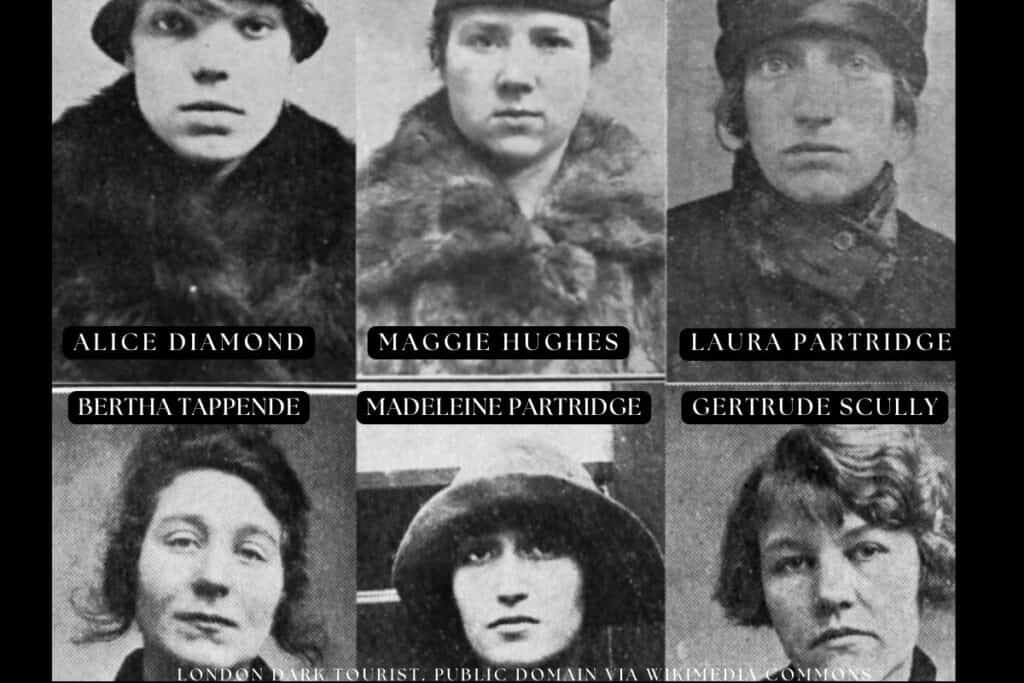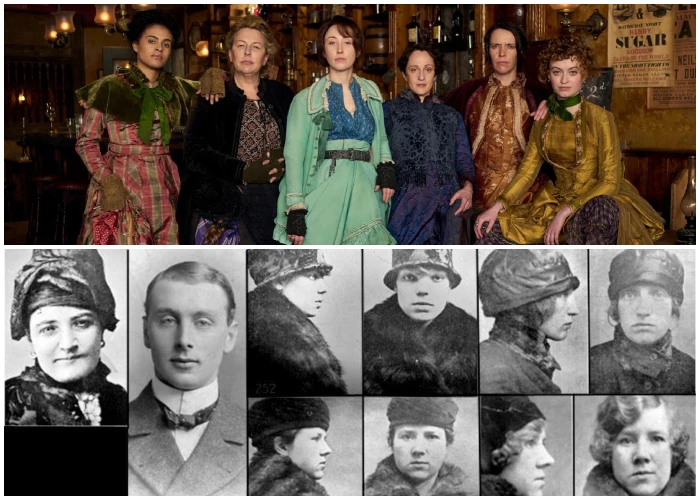As Christmas 1927 approached, London's luxury department stores braced themselves for a surge in shoplifting.
Female criminals, notorious for their light-fingered antics, were often reported in newspapers, and store detectives were on high alert. However, even they weren’t prepared for the sheer scale of the organized crime wave that was about to hit.

On December 23, a fleet of at least 14 cars departed from Elephant and Castle, ferrying a notorious gang of female criminals across the city to raid some of London’s most prestigious stores.
The targets included Gamages in Holborn, Harrods in Knightsbridge, Selfridges on Oxford Street, and Debenham & Freebody on Wigmore Street, among others. This coordinated spree was the work of a criminal syndicate known as the Forty Elephants.
While the Forty Elephants are a central focus in the Disney+ historical crime series A Thousand Blows, which takes place in the late 19th and early 20th centuries, the gang’s real-life roots stretch back further.
Operating since the late 1800s, the Forty Elephants were a female-led crime syndicate originating from the Elephant and Castle area in south London. By the time of the 1927 raid, the gang had already been active for decades, making headlines with their audacious and often violent robberies.

In A Thousand Blows, Steven Knight's series, set during the 1880s, delves into the rise of the Forty Elephants, featuring the gang’s original “Queen” Mary Carr, played by Erin Doherty.
While the show fictionalizes many aspects, including the introduction of supporting characters like Alice Diamond (played by Darci Shaw), the story is grounded in historical fact.

In reality, Carr was succeeded by Alice Diamond, whose leadership elevated the gang’s operations to new heights in the 1920s.
Known for their innovative and often audacious methods, the Forty Elephants were masters of disguise and deception. They would use large dresses with hidden pockets or netting to stash stolen goods, and in some raids, they even charged into stores, scaring both staff and customers to snatch high-end items.
As detailed in the book Alice Diamond and the Forty Elephants by Brian McDonald, their raids spanned across the country, with one store estimating a loss of £7,000 in stolen goods over a year—equivalent to over half a million pounds today.
The Forty Elephants were an offshoot of the male Elephant Gang, which had formed in the 1780s. The women were often related to male gang members, but by the 1890s, they were operating independently.
Their methods were varied: some posed as maids to infiltrate wealthy households, while others would lure unsuspecting men into compromising situations and blackmail them. One infamous scam involved Mary Carr using a lost purse to lure men to her home, only for her gang to falsely accuse them of assault and extort money.
Mary Carr, born in 1862, was a significant figure in the gang’s early days. She had a reputation for being a beautiful woman with a knack for high society and high fashion. Carr even posed as a socialite, “Lady Mary Carr,” to gain access to the wealthier circles she targeted.

However, she was eventually arrested, and after spending years in and out of prison, she was succeeded by Alice Diamond.
Under Alice Diamond's leadership, the Forty Elephants thrived. Known for her towering height and love of sparkling rings, Alice Diamond led the gang to further prominence.
She divided the women into smaller cells of five, allowing them to hit multiple stores simultaneously. The gang also took their operations beyond London, raiding stores in Bristol, Bath, Birmingham, Manchester, and Newcastle.
Despite their ruthlessness, they were disciplined, with Alice Diamond enforcing strict rules within the gang, including no drinking before a raid and no stealing from one another.
Diamond’s reign, however, came to an end in 1952, with her death marking the decline of the Forty Elephants. The gang’s downfall was accelerated by the increasing sophistication of store security and the changing social landscape. By 1939, their activities had mostly ceased, though there were occasional flare-ups until the 1950s.
“Raids were all over the country, some on a huge scale,” McDonald notes. He emphasizes the gang’s terrorizing presence, with some shops losing significant amounts of money to their operations.
The Forty Elephants’ organized crime, led by women, is an extraordinary story—one that is now being dramatized in A Thousand Blows, which airs on Disney+.
The series, inspired by real events, portrays Mary Carr’s leadership and explores the world of bare-knuckle boxing and criminal gangs in Victorian London. The show features Hezekiah Moscow (Malachi Kirby) and Alec Munroe (Francis Lovehall), two friends drawn into the criminal underworld, and Mary Carr, who brings the Forty Elephants into the fold.
The historical fiction mixes fact with creative storytelling, introducing viewers to the mysterious and brutal world of the gang.
“You don’t become an Elephant. Elephants are born,” Mary Carr tells Alice in the series, hinting at the deep-rooted nature of the gang and its traditions.
While some aspects of the show have been fictionalized, such as the inclusion of Alice Diamond (who became active after the show’s 1880s setting), the portrayal of the Forty Elephants as a formidable force in London’s criminal landscape is grounded in historical reality.
As A Thousand Blows makes its debut on Disney+ on February 21, the fascinating true story of the Forty Elephants will captivate viewers, shining a light on one of the most formidable criminal gangs in London's history.









COMMENTS
Comments are moderated and generally will be posted if they are on-topic and not abusive.
For more information, please see our Comments FAQ